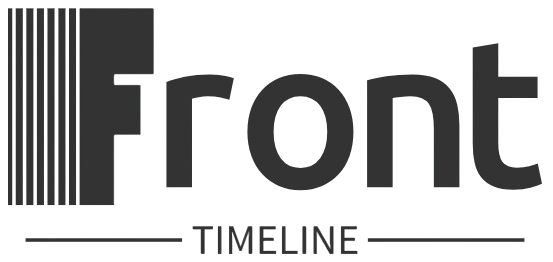Unlocking the Secrets: How to Successfully Market Historical or Time-Focused Domains
When it comes to the world of domain names, the possibilities are endless. From catchy brand names to keyword-rich websites, the domain industry is constantly evolving. One fascinating niche within this market is historical or time-focused domains. These domains, which revolve around specific eras, events, or time periods, hold immense potential for businesses, historians, and enthusiasts alike. But how can one effectively market these unique domains to reach their full potential? In this comprehensive guide, we will explore the intricacies of marketing historical or time-focused domains, uncovering strategies, tips, and best practices to help you make the most of these valuable assets.
The Power of Historical Domains

Historical domains possess a unique allure that sets them apart from traditional domain names. Whether it’s a domain related to a significant event, a historical figure, or a particular era, these domains have the power to evoke nostalgia, curiosity, and a sense of connection to the past. For businesses looking to establish their credibility or tap into a specific niche market, historical domains can be a valuable asset. By leveraging the stories, symbols, and significance associated with these domains, businesses can create a memorable brand identity that resonates with their target audience.
One example of a successful historical domain is history.com. This domain, owned by A&E Television Networks, has become a go-to destination for history enthusiasts, offering a wealth of content on various historical topics. By choosing a domain name that clearly reflects their niche and audience, A&E has established history.com as a trusted source for historical information and entertainment.
Understanding the Market for Historical Domains

Before diving into marketing historical domains, it’s crucial to understand the market landscape and identify potential opportunities. Conducting thorough research on historical trends, popular topics, and emerging interests can provide valuable insights into the demand for historical domains. By staying abreast of current events, anniversaries, and cultural phenomena, you can pinpoint key areas of interest that align with your historical domain portfolio.
Additionally, studying the competition and analyzing successful historical domains can offer valuable lessons on effective branding, content strategies, and audience engagement. By identifying gaps in the market and underserved niches, you can carve out a unique position for your historical domains and differentiate yourself from competitors.
Building a Strong Brand Identity

One of the key components of marketing historical domains is building a strong brand identity that resonates with your target audience. Your brand identity should reflect the historical themes, values, and stories associated with your domain, creating a cohesive and engaging experience for visitors. Consider incorporating historical imagery, colors, and fonts into your website design to evoke a sense of nostalgia and authenticity.
Furthermore, crafting compelling content that showcases the historical significance of your domain can help attract and retain visitors. Whether it’s blog posts, articles, videos, or interactive timelines, creating valuable and engaging content can establish your domain as a trusted resource for historical information.
Utilizing SEO Strategies

Search engine optimization (SEO) plays a crucial role in marketing historical domains and driving organic traffic to your website. By optimizing your content for relevant historical keywords, meta tags, and alt text, you can improve your domain’s visibility in search engine results pages. Conduct keyword research to identify popular historical terms and phrases that resonate with your target audience, and incorporate them strategically into your content.
Additionally, building backlinks from reputable historical websites, directories, and forums can help boost your domain’s authority and credibility. Engage with the historical community by participating in discussions, sharing insights, and offering valuable content that demonstrates your expertise in the field. By establishing a strong online presence within the historical niche, you can attract more visitors and increase the visibility of your domain.
Engaging with the Historical Community
One of the most effective ways to market historical domains is to engage with the historical community and build relationships with like-minded enthusiasts. Joining historical forums, social media groups, and online communities can provide valuable networking opportunities and insights into the interests and preferences of your target audience. By sharing your domain and contributing to discussions, you can raise awareness of your historical brand and attract new visitors to your website.
Collaborating with historians, researchers, and other experts in the field can also help enhance the credibility and authority of your domain. Consider hosting webinars, interviews, or virtual events featuring guest speakers who can provide valuable insights and perspectives on historical topics. By positioning your domain as a hub for historical knowledge and expertise, you can attract a dedicated following of history enthusiasts and researchers.
Investing in Paid Advertising
While organic marketing strategies are essential for building a strong foundation for your historical domain, investing in paid advertising can help accelerate your growth and reach a wider audience. Consider running targeted ads on social media platforms, search engines, or historical websites to promote your domain and attract new visitors. By leveraging the targeting options available through paid advertising, you can reach users who are specifically interested in historical topics and increase the visibility of your domain.
Moreover, retargeting campaigns can help re-engage visitors who have previously visited your website but did not complete a desired action, such as signing up for a newsletter or making a purchase. By displaying personalized ads to these users as they browse the web, you can encourage them to revisit your domain and take the desired action, ultimately driving conversions and increasing engagement.
Measuring Success and Iterating Strategies
As with any marketing initiative, it’s essential to track the performance of your historical domain campaigns and measure the impact of your strategies. Utilize web analytics tools such as Google Analytics to monitor key metrics such as traffic, engagement, conversions, and bounce rate. By analyzing these metrics regularly, you can identify areas of improvement, optimize your marketing efforts, and refine your strategies for maximum effectiveness.
Experiment with A/B testing different marketing messages, calls to action, and landing page designs to determine what resonates best with your audience. By gathering data and insights from these experiments, you can make informed decisions that drive better results and enhance the overall performance of your historical domain.
Common Misconceptions About Marketing Historical Domains
One common misconception about marketing historical domains is that they have a limited audience and appeal only to history enthusiasts. In reality, historical domains can attract a diverse range of visitors, including students, researchers, educators, and businesses seeking to establish their credibility. By positioning your historical domain as a valuable resource for historical information, you can expand your reach and engage with a broader audience.
Another misconception is that historical domains are outdated or irrelevant in today’s fast-paced digital landscape. On the contrary, historical domains offer a unique opportunity to connect with audiences on a deeper level, tapping into emotions, values, and cultural significance that transcend time. By leveraging the timeless appeal of historical themes and stories, you can create a memorable brand experience that resonates with visitors and leaves a lasting impression.
Conclusion
To wrap things up, marketing historical or time-focused domains requires a strategic approach that combines creativity, authenticity, and a deep understanding of historical trends and audience preferences. By leveraging the power of storytelling, engaging with the historical community, and investing in targeted marketing strategies, you can unlock the full potential of your historical domain and establish a strong online presence that resonates with visitors.
Remember, success in marketing historical domains is not about quick fixes or shortcuts but rather about building a strong brand identity, fostering meaningful connections, and delivering valuable content that educates, entertains, and inspires. By embracing the rich tapestry of history and weaving it into your marketing efforts, you can create a compelling narrative that captures the imagination of your audience and sets your historical domain apart from the rest.




